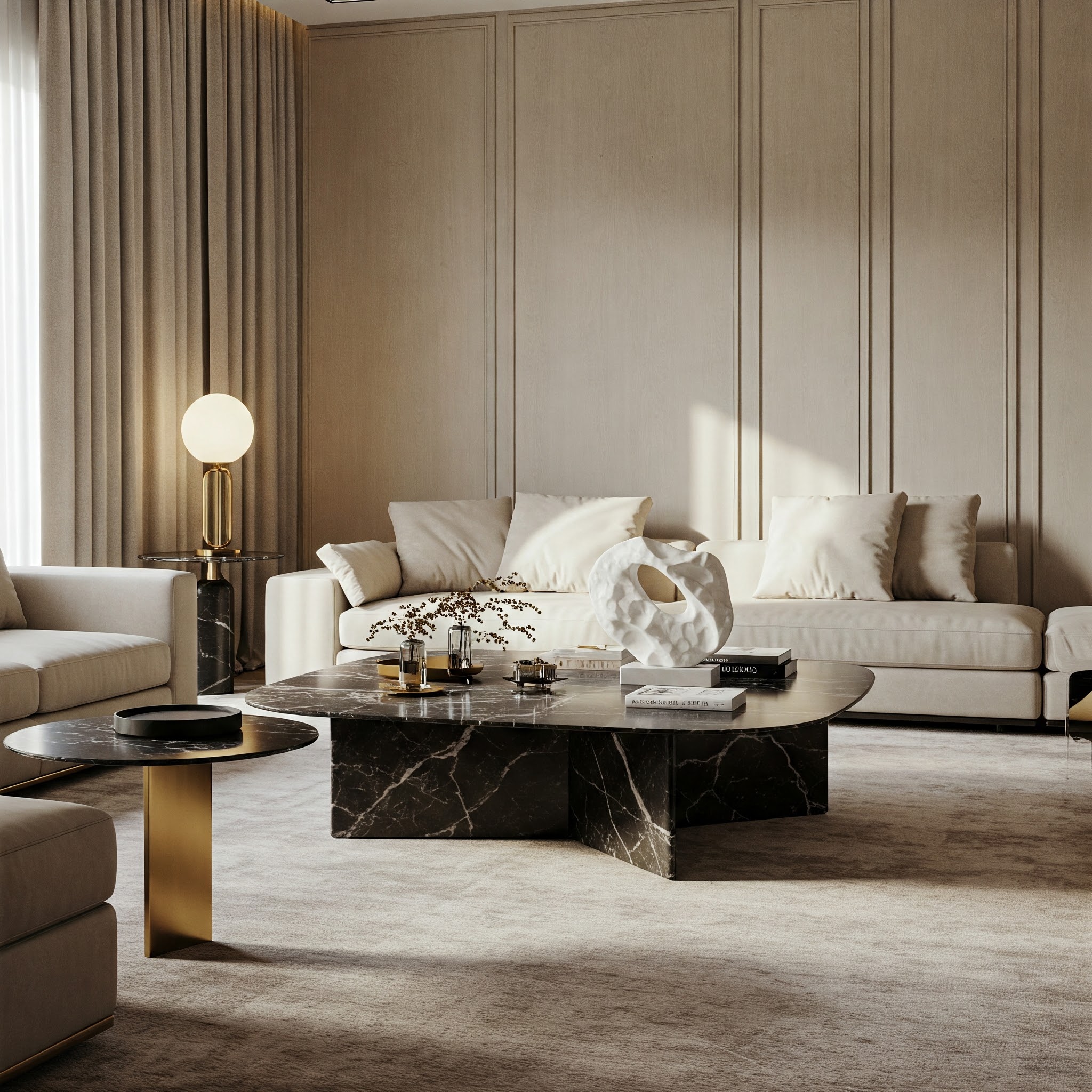Marble, once reserved primarily for countertops and flooring, has undergone a renaissance in interior design. Today’s homeowners and designers are embracing this timeless material in innovative ways, particularly in furniture pieces that serve as striking focal points in modern living spaces. This shift represents more than just a passing trend—it signals a return to appreciating materials with inherent beauty, character, and longevity.
The Enduring Appeal of Marble in Modern Homes
Marble’s appeal lies in its perfect balance of luxury and natural authenticity. Each piece tells a unique geological story through its distinctive veining patterns, ensuring that no two marble furniture items are identical. This exclusivity has driven demand among homeowners seeking distinctive pieces that elevate their interior spaces beyond the mass-produced aesthetic that dominated previous decades.
The material’s versatility has also contributed significantly to its rising popularity. Modern manufacturing techniques have allowed designers to work with thinner, lighter marble slabs without compromising structural integrity. This technological advancement has expanded marble’s application from traditional tables and countertops to innovative furniture pieces including chairs, lighting fixtures, and decorative objects.
Contemporary Design Approaches to Marble Furniture
Today’s designers are approaching marble with fresh perspective, often pairing it with contrasting materials for striking visual impact. Popular combinations include:
- Marble tabletops with brass or blackened steel frames, creating an elegant juxtaposition of textures
- Sculptural marble bases supporting glass surfaces, highlighting the stone’s natural beauty
- Marble inlays in wooden furniture pieces, offering subtle luxury without overwhelming the space
Color trends have evolved as well, moving beyond the classic white Carrara and black Marquina marbles to embrace green Guatemalan marble, striking blue Sodalite, and warm-toned Travertine varieties. These diverse options allow homeowners to incorporate marble furniture that coordinates with virtually any color palette.
Practical Considerations for Marble Furniture Integration
While marble furniture makes a powerful design statement, potential buyers should consider several practical factors:
Marble requires regular maintenance to preserve its appearance, including proper sealing to prevent staining and careful cleaning with pH-neutral products. The material’s natural porosity means that acidic substances can etch the surface if not promptly removed.
Weight considerations are also important when selecting marble furniture pieces, particularly for upper-floor applications or homes with delicate flooring. Many contemporary designers address this concern by using marble primarily for smaller accent pieces or incorporating marble veneers rather than solid slabs for larger furniture items.
Cost remains a significant factor, with high-quality marble furniture representing a substantial investment. However, many homeowners view these pieces as heirloom items that will appreciate in value while providing decades of enjoyment—a counterpoint to the disposable furniture culture that has dominated recent decades.
Environmental and Sustainability Perspectives
The marble furniture renaissance has not been without criticism, particularly regarding environmental impact. Quarrying operations and transportation of heavy stone contribute to carbon emissions, raising questions about sustainability. In response, leading designers have embraced several approaches to minimize environmental concerns:
- Sourcing marble from quarries with responsible environmental practices
- Utilizing marble remnants and offcuts that would otherwise go to waste
- Creating furniture with timeless designs intended to last generations rather than follow seasonal trends
- Exploring recycled marble alternatives and composite materials that incorporate marble dust
These sustainable approaches allow environmentally conscious consumers to embrace marble furniture without compromising their values.
Incorporating Marble Furniture in Your Home
For homeowners looking to incorporate this trend, designers recommend starting with a statement piece rather than attempting to integrate multiple marble elements simultaneously. A marble coffee table or console can serve as an elegant focal point without overwhelming the space.
When selecting marble furniture, consider how the piece’s color temperature interacts with your existing decor. Warm-toned marbles complement earthy palettes and wooden elements, while cooler white and gray marbles enhance contemporary spaces with metal and glass components.
Scale is equally important—large marble pieces work best in spacious environments with minimalist surroundings that allow the natural beauty of the stone to command attention. In more compact spaces, consider marble side tables, lamp bases, or decorative objects that introduce the material’s luxury without dominating the room.
Looking Forward: The Future of Marble in Home Furniture
Rather than a passing trend, design experts predict that marble furniture represents a return to fundamentals of quality, natural beauty, and longevity in home furnishings. As manufacturing techniques continue to evolve, we can expect to see increasingly innovative applications of this ancient material in contemporary contexts.
The coming years will likely bring further advances in marble treatment technologies that enhance durability while reducing maintenance requirements, making these pieces more practical for everyday use. Additionally, we anticipate growing interest in less common marble varieties as consumers seek unique statement pieces that distinguish their homes.
For homeowners with an eye toward both current trends and timeless design, marble furniture offers a rare opportunity to invest in pieces that will remain relevant and appreciated long after other design fads have faded. It’s not merely about following a trend—it’s about embracing materials with inherent beauty and substance that transcend the cyclical nature of interior design fashions.

